Advertisement |
 |
Focus on the origin of life
Nature Chemistry presents a Focus which explores the origins of RNA and its role in contemporary biological systems. The collection of articles reveal new insights into what early Earth might have looked like and how life first emerged.
Read the Focus |  | | |
 |
 |
TABLE OF CONTENTS
|
May 2017 Volume 9, Issue 5 |
 |  |  |
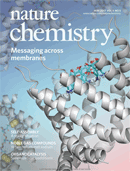 |  Editorial Editorial
 Thesis Thesis
 News and Views News and Views
 Articles Articles
 In Your Element In Your Element | |
 |
|
 |
 |
Editorial |  Top Top |
 |
 |
 |
Sending a message to the other side p403
doi:10.1038/nchem.2776
A range of mechanisms have evolved for communicating information across cell membranes, but designing synthetic analogues is far from trivial. A collection of articles in this issue discuss different methods of passing chemical information across lipid bilayers using artificial systems. |
 |
Thesis |  Top Top |
 |
 |
 |
Dark times pp404 - 405
Bruce C. Gibb
doi:10.1038/nchem.2773
Tenure is vitally important when it comes to the creation and promotion of knowledge — and Bruce Gibb explains why. |
 |
News and Views |  Top Top |
 |
 |
 |
|
 |
| Advertisement |
 |
npj Clean Water: open for submissions
An open access, online-only journal, dedicated to publishing high-quality papers that describe the significant and cutting-edge research that continues to ensure the supply of clean water to populations.
Explore the benefits of submitting your next manuscript. |  | | |
 |
| |
Articles |  Top Top |
 |
 |
 |
A monodisperse transmembrane a-helical peptide barrel pp411 - 419
Kozhinjampara R. Mahendran, Ai Niitsu, Lingbing Kong, Andrew R. Thomson, Richard B. Sessions et al.
doi:10.1038/nchem.2647
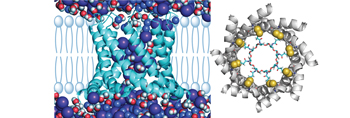
The assembly of transmembrane barrels formed from short synthetic peptides has not been previously demonstrated. Now, a transmembrane pore has been fabricated via the self-assembly of peptides. The 35-amino-acid α-helical peptides are based on the C-terminal D4 domain of the Escherichia coli polysaccharide transporter Wza. |
 |
 |
 |
Ligand-modulated conformational switching in a fully synthetic membrane-bound receptor pp420 - 425
Francis G. A. Lister, Bryden A. F. Le Bailly, Simon J. Webb and Jonathan Clayden
doi:10.1038/nchem.2736

A dynamic foldamer scaffold has now been ligated to a water-compatible, metal-centred binding site and a conformationally responsive fluorophore to form a receptor mimic that inserts into the membrane of artificial vesicles. Binding of specific carboxylate ligands induces a global conformational change that depends on the structure of the ligand, and can be detected via fluorescence.
Chemical compounds
See also: News and Views by Cockroft |
 |
 |
 |
Controlled membrane translocation provides a mechanism for signal transduction and amplification pp426 - 430
Matthew J. Langton, Flore Keymeulen, Maria Ciaccia, Nicholas H. Williams and Christopher A. Hunter
doi:10.1038/nchem.2678
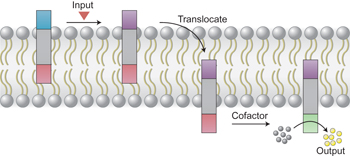
The transmission of chemical information across lipid bilayer membranes is crucial in biological systems. Now, an artificial chemical system able to both transduce and amplify chemical signals across a membrane has been developed. The system works by exploiting the controlled translocation of a synthetic molecule that is embedded within a vesicle membrane.
Chemical compounds
See also: News and Views by Cockroft |
 |
 |
 |
Engineering genetic circuit interactions within and between synthetic minimal cells pp431 - 439
Katarzyna P. Adamala, Daniel A. Martin-Alarcon, Katriona R. Guthrie-Honea and Edward S. Boyden
doi:10.1038/nchem.2644
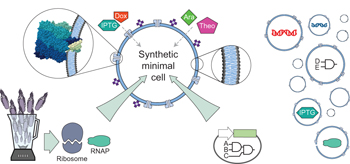
Genetic circuits are important for synthetic biology, biochemistry and bioengineering. Now, the encapsulation of genetic circuits into liposomes has been shown to enable a more modular design, the selective isolation of reactions from the environment and from each other, and the hierarchical assembly of reaction products. |
 |
 |
 |
A stable compound of helium and sodium at high pressure pp440 - 445
Xiao Dong, Artem R. Oganov, Alexander F. Goncharov, Elissaios Stavrou, Sergey Lobanov et al.
doi:10.1038/nchem.2716
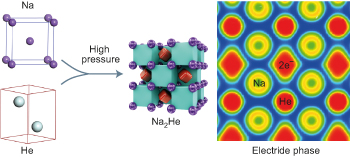
Helium is generally recognized as being chemically inert. A thermodynamically stable compound of helium and sodium, Na2He, has been predicted computationally and then synthesized at high pressure. It exists as an electride, where strongly localized electrons serve as anions located at the centre of Na8 cubes.
See also: News and Views by Miao |
 |
 |
 |
Flow chemistry and polymer-supported pseudoenantiomeric acylating agents enable parallel kinetic resolution of chiral saturated N-heterocycles pp446 - 452
Imants Kreituss and Jeffrey W. Bode
doi:10.1038/nchem.2681
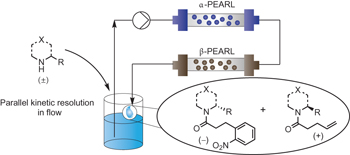
Parallel kinetic resolution (PKR) of N-heterocycles via asymmetric acylation has been achieved using quasienantiomers of polymer supported hydroxamic acid reagents. Flow techniques provide physical separation of the reagents, establishing a practical implementation of PKR. The enantioenriched amide products can be readily deprotected to reveal the desired amine without detectable epimerization.
Chemical compounds |
 |
 |
 |
Photoredox activation of carbon dioxide for amino acid synthesis in continuous flow pp453 - 456
Hyowon Seo, Matthew H. Katcher and Timothy F. Jamison
doi:10.1038/nchem.2690

Although the synthetic chemistry of carbon dioxide has generally been limited to two-electron pathways, single-electron mechanisms would open avenues to new reactivity. Now, the coupling of carbon dioxide and amines to produce α-amino acids can be achieved by an organic photoredox catalyst in continuous flow.
Chemical compounds |
 |
 |
 |
Activating lattice oxygen redox reactions in metal oxides to catalyse oxygen evolution pp457 - 465
Alexis Grimaud, Oscar Diaz-Morales, Binghong Han, Wesley T. Hong, Yueh-Lin Lee et al.
doi:10.1038/nchem.2695
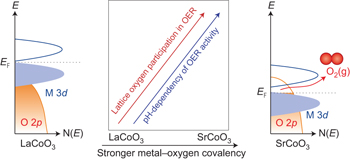
Understanding how oxygen-evolution reaction (OER) catalysts work is important for the development of efficient energy storage technologies. It has now been shown that lattice oxygen participates in O2 generation during the OER on some highly active metal oxides and that this behaviour becomes more prevalent with greater metal–oxygen covalency. |
 |
 |
 |
G-quadruplex organic frameworks pp466 - 472
Yi-Lin Wu, Noah E. Horwitz, Kan-Sheng Chen, Diego A. Gomez-Gualdron, Norman S. Luu et al.
doi:10.1038/nchem.2689
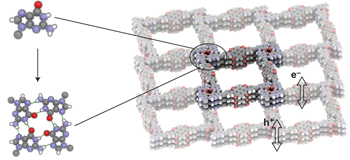
Using self-assembly to generate hydrogen-bonded organic networks is an underexplored method when preparing functional framework materials. Now, taking cue from DNA, bio-inspired G-quadruplexes are used as both intrinsic electron donors and hydrogen-bonding linkers to assemble rylene diimide acceptors. The resulting rectangular grids form layered crystalline frameworks, in which photoexcitation produces long-lived mobile charge carriers. |
 |
 |
 |
Tuning underwater adhesion with cation–π interactions pp473 - 479
Matthew A. Gebbie, Wei Wei, Alex M. Schrader, Thomas R. Cristiani, Howard A. Dobbs et al.
doi:10.1038/nchem.2720

Cation–π interactions are critical for the adhesion proteins of marine organisms, yet the energetics of cation–π interactions in underwater environments remains uncharted. Nanoscale force measurements and NMR spectroscopy reveal that interfacial confinement fundamentally alters the energetics of cation–π mediated assembly.
See also: News and Views by Birkedal |
 |
 |
 |
Self-propelled supramolecular nanomotors with temperature-responsive speed regulation pp480 - 486
Yingfeng Tu, Fei Peng, Xiaofeng Sui, Yongjun Men, Paul B. White et al.
doi:10.1038/nchem.2674
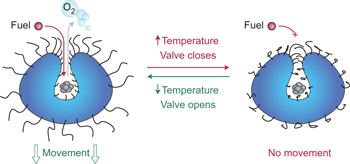
Effective regulation over the motion of self-propelled micro- and nanomotors is a challenging proposition. Now, self-assembled stomatocyte nanomotors with thermoresponsive polymer brushes have been designed that sense changes in local temperature and regulate the accessibility of the hydrogen peroxide fuel — thereby adjusting the speed and behaviour of nanomotor itself. |
 |
 |
 |
Organocatalytic stereoselective [8+2] and [6+4] cycloadditions pp487 - 492
Rasmus Mose, Gert Preegel, Jesper Larsen, Sofie Jakobsen, Eva Høgh Iversen et al.
doi:10.1038/nchem.2682
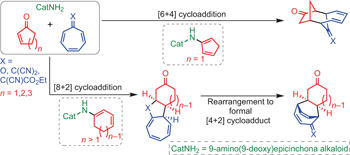
Higher-order cycloadditions — cycloadditions involving more than six π electrons — provide easy access to complex molecules containing heterocyclic or carbocyclic scaffolds. Now, it has been shown that aminocatalytic activation of 2-cycloalkenones affords mixtures of dienamines that can undergo [6 + 4] cycloadditions with heptafulvenes through a cross dienamine, or [8 + 2] cycloadditions through a linear dienamine.
Chemical compounds |
 |
 |
 |
Control over differentiation of a metastable supramolecular assembly in one and two dimensions pp493 - 499
Tomoya Fukui, Shinnosuke Kawai, Satoko Fujinuma, Yoshitaka Matsushita, Takeshi Yasuda et al.
doi:10.1038/nchem.2684
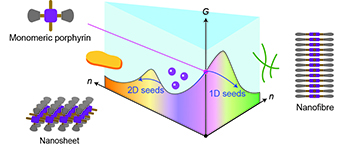
Unlike in biomolecular systems, synthetic self-assembly is largely spontaneous, thus limiting the complexity and functionality of the materials one can create. Now, self-assembly under out-of-equilibrium conditions is demonstrated for a metastable supramolecular system. Differentiation of nanoparticles into nanofibres and nanosheets — with electronically distinct states — is achieved through kinetic control, illustrating pathway-dependent material properties.
Chemical compounds |
 |
In Your Element |  Top Top |
 |
 |
 |
Tin can p500
Michael A. Tarselli
doi:10.1038/nchem.2769
Tin has been ubiquitous throughout the course of human history, from Bronze Age tools to lithium-ion battery components, yet Michael A. Tarselli warns it should not be deemed pedestrian. Its tendency to linger in human tissues presents a dangerous side that steers researchers towards greener chemistries. |
 |
 Top Top |
 |
 |
 |
| |
 |  |  |  |  |  | Natureevents is a fully searchable, multi-disciplinary database designed to maximise exposure for events organisers. The contents of the Natureevents Directory are now live. The digital version is available here.
Find the latest scientific conferences, courses, meetings and symposia on natureevents.com. For event advertising opportunities across the Nature Publishing Group portfolio please contact natureevents@nature.com |  |  |  |  |  |
|
 |


No comments:
Post a Comment